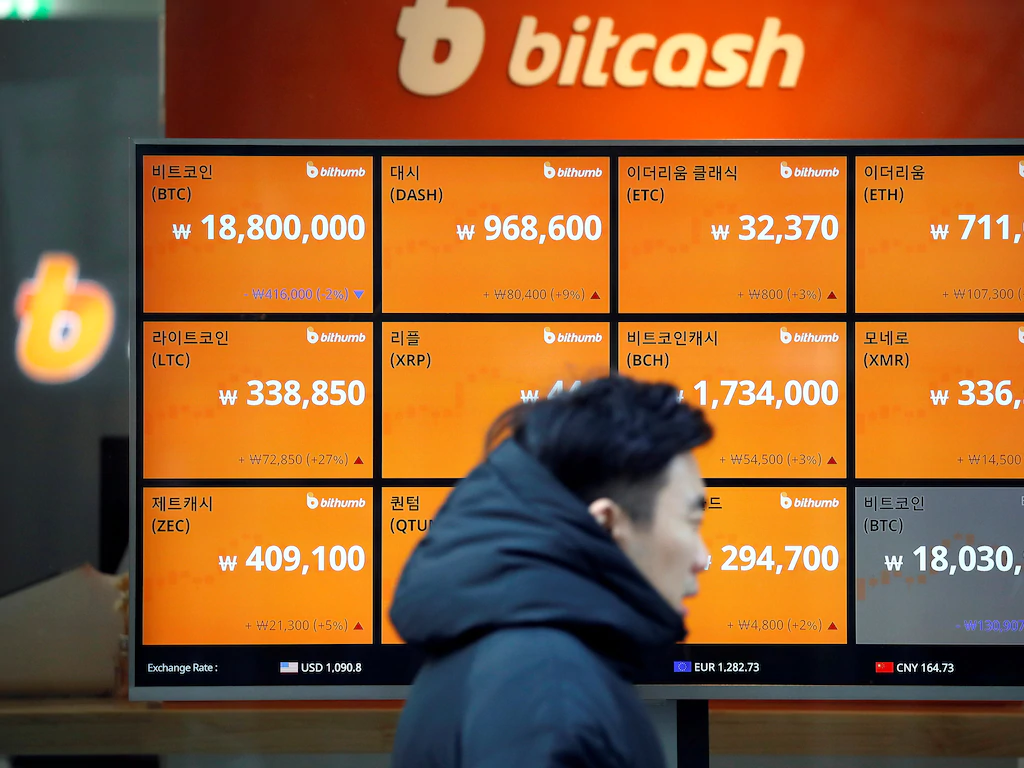Reuters
The cryptocurrency market added $13 billion in value over the past day as bitcoin jumped more than 6% Thursday evening.
Bitcoin has rallied more than 100% from its March 16 low and has eclipsed $10,000 for the first time since February.
The three major reasons for the move include anticipation of the next bitcoin halving, institutional investors adding exposure, and the perception that bitcoin would protect against a surge in inflation.
Visit Business Insider’s homepage for more stories.
Bitcoin jumped 6% on Thursday, causing a $13 billion surge in market value for the entire cryptocurrency market, according to data from Coindesk.
The entire cryptocurrency market is worth a combined $267 billion as of Friday morning, data from CoinMarketCap shows.
The top three cryptocurrencies ranked by market value are bitcoin, worth $181.5 billion; ethereum, worth $23.4 billion; and XRP, worth $9.5 billion.
Bitcoin’s Thursday jump only adds to its recent gains. The cryptocurrency has rallied 102% from its March 16 low of $4,944 to $10,025 Thursday night, representing the first time bitcoin has eclipsed $10,000 since mid-February.
Read more: A hedge-fund chief overseeing $2 billion shares 5 reasons why he sees bitcoin surging 900% by the end of 2021 as Paul Tudor Jones dives into the asset
There are three major reasons being attributed to the move higher in crypto markets.
1. Anticipation of the upcoming bitcon halving.
Bitcoin is scheduled to be “halved” on May 11.
Currently, miners are rewarded with 12.5 new bitcoin per block mined.
On May 12, that 12.5 new bitcoin reward will be halved to 6.25 new bitcoin, limiting the future supply of bitcoin coming onto the market.
Basic supply-demand principles suggest a reduction in supply results in an increase in price.
Read more: Chad Glauser has dominated his benchmark for 28 months straight using just 3 ETFs. Here’s what they are, and how they’ve combined to beat the market.
Previous halving events were preceded with a sharp rally in bitcoin as anticipation of the event grew.
Coindesk.com
In 2012, new bitcoin rewards to miners were halved from 50 to 25, and in 2016, they were halved again from 25 to 12.5.
Halvings in bitcoin occur every four years.
2. Evidence that institutional investors are starting to load up on bitcoin.
Institutional investors allocating a piece of their portfolios to bitcoin has always been a scenario talked up by bullish crypto investors.
That talking point seems to finally be coming to fruition.
On Thursday, Bloomberg reported that billionaire hedge fund manager Paul Tudor Jones would start buying bitcoin.
Jones told clients that one of his funds could have a low-single-digit percentage allocation to bitcoin futures.
Jones’ reasoning for the allocation to bitcoin? To protect against inflation.
Read more: RBC explains how gold could surge 9% to a record high, even as stocks climb – a scenario that would shatter how investors have thought about the commodity for decades
3. Growing belief that bitcoin will act as a hedge against inflation.
There is a growing belief that bitcoin will serve as an effective hedge against a potential rise in inflation.
Whereas governments can print an unlimited amount of money for various fiscal and monetary policies, similar to physical gold, the supply of bitcoin is fixed.
The supply of bitcoin is fixed at 21 million coins. It is estimated that of the 21 million total coins, 18 million have been mined already.
Bitcoin acting as an inflation hedge has been picking up steam as the US Fed’s balance sheet has expanded by trillions of dollars in just a matter of weeks to fund stimulus programs aimed at mitigating the economic damage caused by the coronavirus pandemic.
As outlined in the chart below, technically, bitcoin is pushing up against a key resistance level. The resistance for the digital gold currency has been $10,000 since 2018. If bitcoin can decisively trade above the psychological $10,000 level, bulls should be back in control of bitcoin.
Read more: Nancy Davis has a pristine track record of calling recent market meltdowns. She outlines a new bubble she sees building in the bond market – and offers 3 strategies for taking advantage.
Freestockcharts.com



